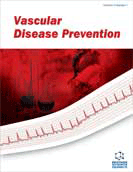
Abstract
Familial Combined Hyperlipidemia (FCH) is a common metabolic disorder characterized by: a) increase in cholesterolemia and/or triglyceridemia in at least two members of the same family, b) intraindividual and intrafamilial variability of the lipid phenotype, and, c) increased risk of premature coronary heart disease (CHD). FCH is one of the most common genetic hyperlipidemias in the general population (prevalence estimated: 0.5-2.0%), being the most frequent one in patients affected by CHD (10%) and among acute myocardial infarction survivors aged less than 60 years (11.3%). This percentage increases to 40% when all the myocardial infarction survivors are considered without age limits. However, because of the peculiar variability of laboratory parameters, and because of the frequent overlapping with the features of the metabolic syndrome, FCH is often not recognised and therefore, treated late. Some algorithms and guidelines exist, aimed at improving the detection of FCH in a specialist setting. The aim of this review is to define the main characteristics of FCH in order to simplify its detection and early treatment by non-specialists by using practical guidelines.
Keywords: Familial combined hyperlipidemia, guidelines, diagnosis, management



